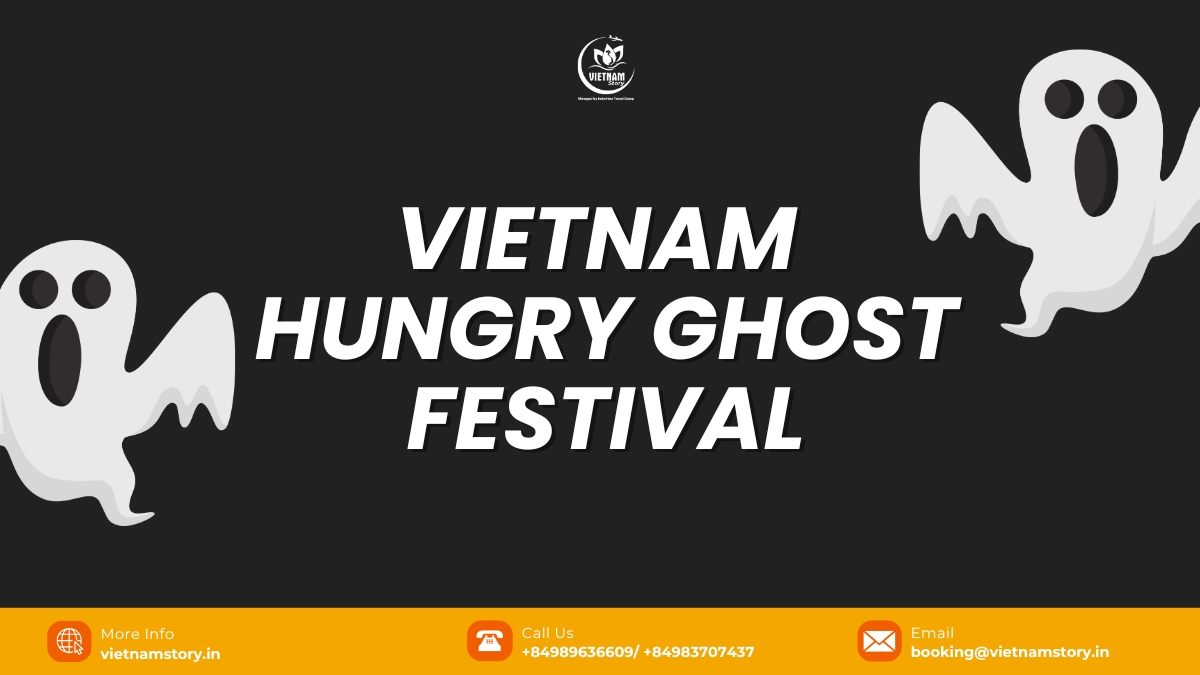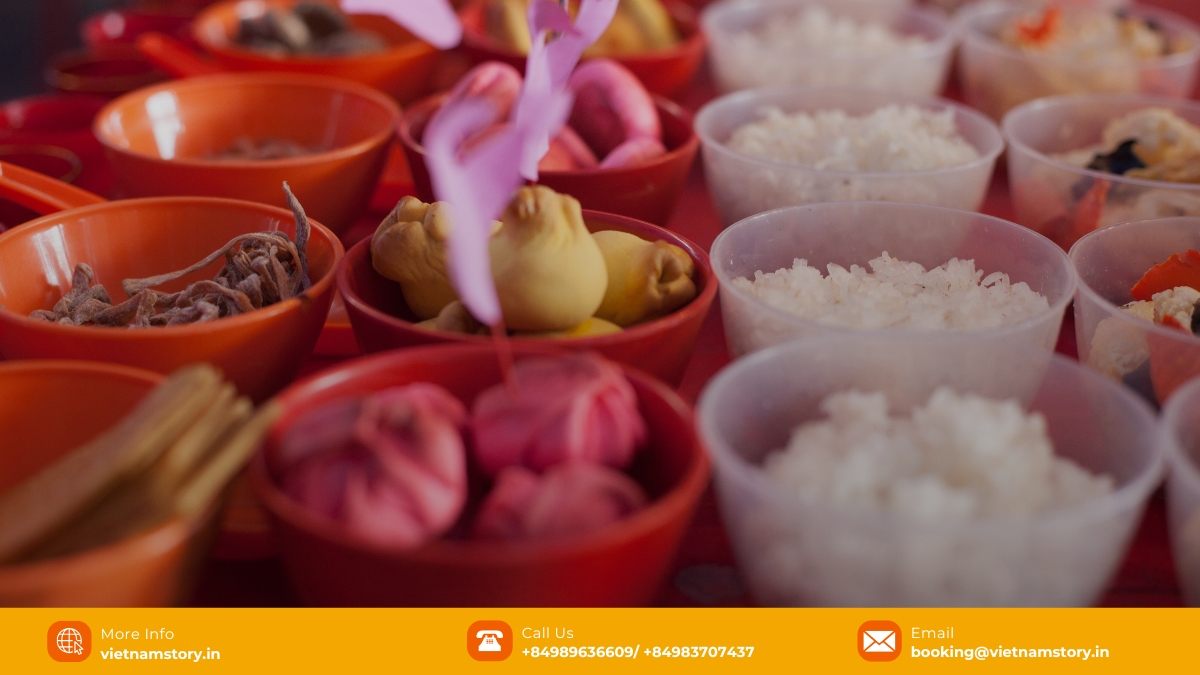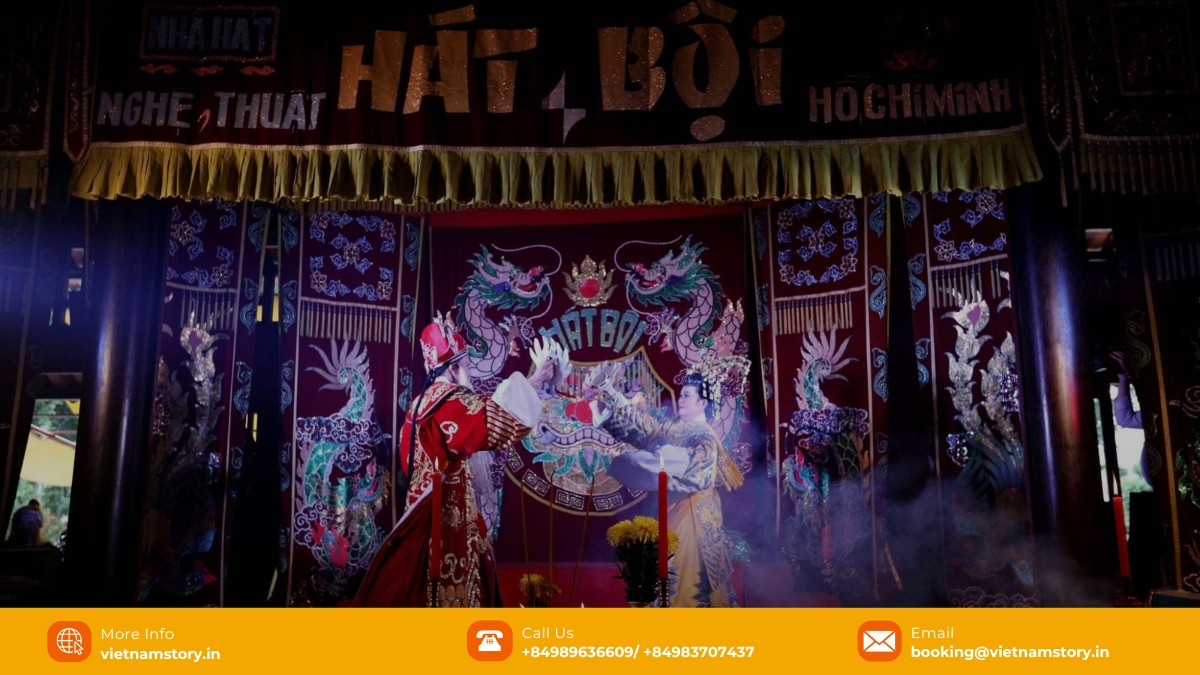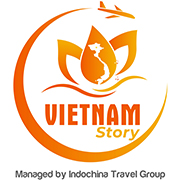The Hungry Ghost Festival, widely known in Vietnam as Vu Lan or Tết Trung Nguyên, is a deeply significant cultural and spiritual event observed throughout the country. It predominantly takes place during the seventh lunar month (typically falling in August or September of the Western calendar), a period often referred to as Ghost Month (Gui Yue). More than just a festival, Vu Lan is a profound expression of Vietnamese beliefs about life, death, karma, and the interconnectedness of the living and the departed, heavily emphasizing filial piety. For visitors to Vietnam, particularly those from India familiar with shared Buddhist roots, understanding the nuances of the Hungry Ghost Festival offers a unique lens into the country’s spiritual identity — especially its deep connection with Buddhism in Vietnam, Daoist practices, and enduring folk traditions.

A Convergence of Faiths: Tracing the Festival’s Origins and Significance
The origins of the Hungry Ghost Festival are rooted in a fascinating blend of influential religious beliefs, adapted and integrated within Vietnamese culture.
The Buddhist Roots: Ullambana and Filial Piety (Vu Lan)
The Buddhist foundation, known as the Ullambana Festival (transliterated as Yulanpen), is central to Vietnam’s Vu Lan celebration. Its origin is famously recounted in the Yulanpen Sutra (or Ullambana Sutra). The story tells of Maudgalyayana (known as Mục Liên in Vietnamese), a chief disciple of the Buddha renowned for his psychic abilities. Using his powers, he discovered his deceased mother had been reborn in the realm of the hungry ghosts (Pretas) due to negative karma accumulated in her past life. These beings are imagined as having large stomachs and tiny mouths, perpetually suffering from unsatisfied hunger and thirst within the cycle of samsara.
Distraught, Maudgalyayana tried to offer his mother food, but it turned to flames before she could eat. He sought the Buddha’s guidance, who explained that the suffering was too great for one person alone to alleviate. The Buddha advised that salvation could be achieved through the collective power of the sangha (the community of monks and nuns). He instructed Maudgalyayana to make offerings of food and other necessities to the monastic community on the 15th day of the seventh lunar month, coinciding with the end of the rainy season retreat (Vassa). The merit (punya) generated from these collective offerings could then be transferred to his mother and other suffering spirits, easing their torment and helping them towards a better rebirth. This powerful story deeply ingrained the value of filial piety – profound respect and care for one’s parents and ancestors – making it the cornerstone of the Vu Lan festival in Vietnam.
The Daoist Influence: Zhongyuan Jie and the Gates of the Underworld
Parallel to Buddhist traditions, Daoist beliefs significantly shape the festival, known in Daoism as Zhongyuan Jie (Middle Element Festival). According to Daoist and Chinese folk traditions, the entire seventh lunar month is considered Ghost Month. It is believed that during this time, the gates of the underworld (or hell) are opened, allowing spirits – both ancestors and potentially malevolent wandering ghosts (gui) – to roam the earth. While ancestor spirits are welcomed, precautions are taken against troublesome ghosts who might cause mischief or harm.
The 15th day of the month is also considered the birthday of the Daoist deity Diguan, the Official of Earth, who is said to judge the deeds of the living. However, the main focus remains on appeasing the spirits released during this month. Daoist priests often perform rituals and chants to placate these wandering souls and guide them.
Cultural Synthesis in Vietnam
In Vietnam, these Buddhist and Daoist strands have interwoven seamlessly with indigenous ancestor veneration practices. Vu Lan becomes a time not just for expressing filial piety towards parents (living and deceased) and transferring merit to suffering souls, but also for generalized ancestor worship and demonstrating compassion through acts of charity towards the less fortunate, seen as another way to accumulate merit.
READ MORE: Vietnam’s Festive Calendar: A Journey Through Tradition and Celebration
Preparations and Rituals: Welcoming and Appeasing the Spirits
The seventh lunar month prompts meticulous preparations reflecting deep respect for the spiritual world.
Cleansing and Altar Setup
Homes and businesses undergo thorough cleaning to symbolically remove negative energy and create a welcoming space. Families often set up an altar laden with offerings.
Making Offerings (Cúng Chúng Sinh)
This is a central practice. Key offerings include:
- Food: Elaborate meals, often vegetarian, along with fruits, sweets, and sometimes rice porridge (cháo loãng) specifically for ghosts with small throats. Ancestors are often offered their favourite dishes.
- Incense (Joss Sticks): Lit to invite spirits and carry prayers.
- Joss Paper (Spirit Money): Gold and silver paper money (vàng mã) is burned extensively. This practice stems from the belief that burning transforms the paper into real currency usable by spirits in the afterlife.
- Paper Effigies: Intricate paper models of houses, cars, clothes, phones, and other luxury items are also burned, providing the spirits with material comforts.
These offerings are typically made outdoors for wandering ghosts (cúng cô hồn) and indoors or at the family altar for ancestors.

Burning Rituals
The burning of joss paper and effigies is a visually striking aspect, performed usually on the first, 15th (peak day), and last day of the month. It’s believed this transmits the goods from the earthly realm to the spirit realm.
Prayers and Chanting
Visiting pagodas for prayers and listening to monks chanting sutras, particularly those related to filial piety and salvation (like the Yulanpen Sutra), is common during Vu Lan.
Floating Lanterns
In some areas, particularly near rivers or lakes, people release small paper lanterns with candles onto the water. This beautiful ritual is meant to guide lost souls towards the afterlife.
Performances
While less common than in places like Singapore or Malaysia, sometimes community events might feature traditional music or cultural performances, historically including forms like Hát Chầu Văn or folk opera, intended to entertain both the living and the spirits.
Traditional Food and Offerings: Symbolism on the Plate
The food prepared during the Hungry Ghost Festival is rich in symbolism.
- Vegetarian Focus: Reflecting Buddhist compassion and the desire to avoid generating negative karma, vegetarian dishes (đồ chay) featuring tofu, mushrooms, and vegetables are prominent, especially in pagoda offerings and meals dedicated to appeasing wandering spirits.
- Symbolic Treats: Glutinous rice cakes (bánh ít, bánh gai), sweet soups (chè), and meticulously arranged fruit platters represent sweetness, prosperity, and purity.
- Offerings to Ancestors: These are more personalized, often including savory dishes (thịt kho, gà luộc) that the ancestors enjoyed in life, alongside rice and wine. This signifies ongoing care and connection. These meals, often shared among living family members after the offering, highlight Vietnamese dining customs where knowing how to hold chopsticks is key.
- The Importance of Sharing: After prayers, food offerings are often shared among family members or distributed to neighbors and the poor, embodying generosity and community spirit, which also generates merit.
READ MORE: Tet Trung Thu: A journey into Vietnam’s enchanting mid-autumn festival
Ghost Month Taboos: Navigating with Caution
The belief that spirits roam freely during the entire seventh lunar month leads to several traditional precautions or taboos, especially among more traditional communities. While not universally observed with strictness today, being aware of them shows cultural sensitivity:
- Avoid swimming, especially at night, due to fear of “water ghosts” pulling people under.
- Refrain from staying out late or walking alone at night.
- Don’t hang laundry outside overnight, as spirits might “wear” them or get trapped.
- Avoid whistling or calling out names late at night, as it might attract ghostly attention.
- Steer clear of major life events like weddings, moving house, or starting new businesses during this inauspicious month.
- Try not to step on or kick roadside offerings.
- Avoid wearing predominantly red or black clothing, as these colours are thought to attract spirits.
- Be cautious when hearing your name called from behind at night – don’t turn around immediately.

Experiencing the Festival in Vietnam: Respect and Understanding
The Hungry Ghost Festival (Vu Lan) offers a profound cultural immersion but requires respectful engagement from visitors.
- Mindful Observation: Witness rituals like burning offerings or pagoda ceremonies quietly. Understand these are deeply spiritual acts for participants. Avoid loud chatter or intrusive behaviour.
- Appropriate Attire: Dress modestly (shoulders and knees covered) when visiting pagodas or temples, which are focal points for Vu Lan activities. While traditional full traditional costumes in Vietnam aren’t required for visitors, observing the modest dress code reflects respect for these sacred spaces and the local customs.
- Non-Interference: Respect family gatherings and private rituals. Observe from a distance and don’t interrupt prayers or offering ceremonies.
- Photography Etiquette: Always ask for permission before taking photos of people, especially during ceremonies. Be discreet and avoid using flash photography inside sacred spaces.
- Engage Respectfully: If interacting with locals, show genuine interest and courtesy. Simple Vietnamese phrases are appreciated. Avoid making light of beliefs surrounding ghosts or spirits.
- Focus on Vu Lan’s Spirit: Understand that particularly in Vietnam, the festival emphasizes gratitude towards parents (filial piety) and compassion (bi) alongside ancestor veneration, more so than just fear of ghosts.
- Prime Locations: Major cities like Hanoi (especially around the Old Quarter temples), Hue (with its strong Buddhist traditions and numerous pagodas), and Ho Chi Minh City (Chinatown – Cho Lon area) offer opportunities to observe public aspects of the festival, particularly around the 15th day of the lunar month. Pagodas nationwide will hold special Vu Lan ceremonies.
Conclusion: A Tapestry of Spirituality and Tradition
The Hungry Ghost Festival (Vu Lan / Tết Trung Nguyên) in Vietnam is far more than a quaint tradition; it’s a complex, deeply meaningful observance reflecting core Vietnamese values of filial piety, compassion, community, and respect for the spiritual world. Rooted in Buddhist teachings like karma and merit transfer, enriched by Daoist folklore about the spirit realm, and integrated with ancient ancestor veneration, it is a time of remembrance, reflection, and profound spiritual connection. For visitors, especially those from India who share the Buddhist heritage, witnessing Vu Lan offers a powerful insight into the soul of Vietnam, enriching their journey with a deeper appreciation for the country’s unique blend of spirituality, culture, and enduring traditions surrounding the seventh lunar month.
READ MORE: Unveiling the rich tapestry of Vietnamese Culture: A Journey for the senses











